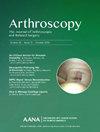评估人工智能(AI)大型语言模型回答问题能力的研究重复且过时:现在必须将人工智能应用于改善临床实践和患者护理。
IF 5.4
1区 医学
Q1 ORTHOPEDICS
Arthroscopy-The Journal of Arthroscopic and Related Surgery
Pub Date : 2024-10-24
DOI:10.1016/j.arthro.2024.10.020
引用次数: 0
摘要
虽然像 ChatGPT 这样的人工智能(AI)技术迄今为止已经展示出了非常真实和强大的能力,但这并不意味着研究这些技术的研究就不会患上 "闪亮物体 "综合症。"闪亮物体 "综合症是一种心理现象,即我们倾向于关注新的、时髦的想法,却忽略了那些真正重要的想法。自 ChatGPT 等大型语言模型(LLMs)发布以来,人工智能受到了越来越多的关注,与此同时,评估 LLMs 回答患者就各种情况提出的假设性问题的能力的研究数量也激增。尽管如此,这些研究都得出了相同的结论:LLM 通常能够为患者的问题提供可靠、相关的回答,但也并非没有局限性。鉴于大量研究表明,无论让 LLM 回答患者有关糖尿病还是肩关节脱位的问题,结果都大同小异,我担心我们有可能会把人工智能当作 "闪亮的物品",而不是可以用来改变临床实践和改善患者护理的工具。具体来说,我们可能已经到了这样一个地步:"要么发表,要么毁灭 "的思维模式推动了重复性方法的研究,而这些研究只能证实围绕人工智能能力和局限性的既定理论,并分散了人们对新用例和对患者护理更有意义的应用的注意力。我们现在正处在一个十字路口,要么继续停留在过去,在不同的手术或损伤上重复旧的研究方法,要么通过扩大这些工具在骨科手术中的应用数量和影响来取得进步。人工智能的能力将继续快速提升,但这取决于那些对骨科和患者护理有深入了解的人。本文章由计算机程序翻译,如有差异,请以英文原文为准。
Editorial Commentary: Studies Evaluating Artificial Intelligence Large Language Models’ Ability to Respond to Questions Are Repetitive and Out-of-Date: Artificial Intelligence Must Now Be Applied to Improve Clinical Practice and Patient Care
While artificial intelligence (AI) technologies such as ChatGPT have shown very real and powerful capabilities to date, this does not mean that research studying these technologies is immune from “shiny object syndrome,” a psychological phenomenon in which individuals tend to focus on new and fashionable ideas only to be distracted from those that truly matter. In parallel with the increased publicity that AI has received since the release of large language models (LLMs) like ChatGPT, there has been an explosion in the number of studies evaluating LLMs’ ability to answer hypothetical questions from patients on a variety of conditions. Nevertheless, these studies tend to leave us with the same conclusion: LLMs are generally capable of providing reliable and relevant responses to patient questions but are not without limitations. Given the abundance of studies demonstrating similar outcomes regardless of whether the LLMs are asked to respond to a patient’s questions about their diabetes or about their shoulder dislocation, I’m afraid we are at risk of making AI more of a “shiny object” than a tool that can be used to change clinical practice and improve patient care. Specifically, we may be approaching a point at which a “publish or perish” mindset has promoted studies with repetitive methodologies that only confirm well-established theories around the capabilities and limitations of AI and has created a distraction from new use cases and more meaningful applications for patient care. We are now at a crossroads at which we can either remain stuck in the past, repeating old studies’ methodologies on a different procedure or injury, or progress by expanding the number and impact of applications that these tools have in orthopaedic surgery. The capabilities of AI will continue to increase at a rapid pace, but it will be up to those with intricate knowledge of orthopaedics and patient care to keep up.
求助全文
通过发布文献求助,成功后即可免费获取论文全文。
去求助
来源期刊
CiteScore
9.30
自引率
17.00%
发文量
555
审稿时长
58 days
期刊介绍:
Nowhere is minimally invasive surgery explained better than in Arthroscopy, the leading peer-reviewed journal in the field. Every issue enables you to put into perspective the usefulness of the various emerging arthroscopic techniques. The advantages and disadvantages of these methods -- along with their applications in various situations -- are discussed in relation to their efficiency, efficacy and cost benefit. As a special incentive, paid subscribers also receive access to the journal expanded website.

 求助内容:
求助内容: 应助结果提醒方式:
应助结果提醒方式:


